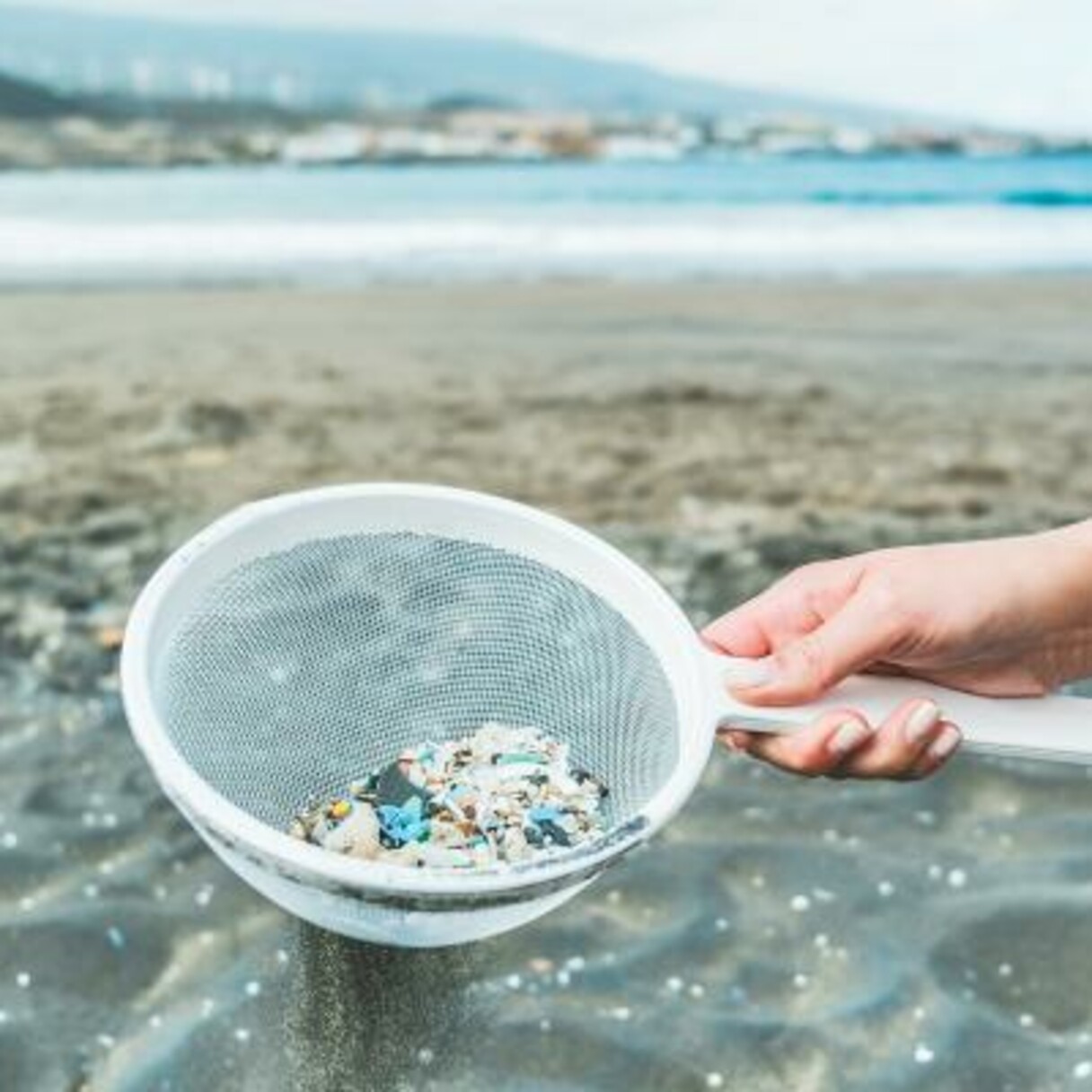The exact definition of micro- and nanoplastics is a subject of scientific debate. Thornton Hampton et al. (2022) used the definition of the California State Water Resources Control Board, identifying microplastics as any plastic particle between 1 nm and 5 mm in size. Frias & Nash (2019), however, proposed a size range of 1 µm - 5 mm, whereas the European Commission has recently adopted a recommendation to define nanomaterials as "a natural, incidental or manufactured material containing particles, in an unbound state or as an aggregate or as an agglomerate and where, for 50 % or more of the particles in the number size distribution, one or more external dimensions is in the size range 1 nm-100 nm."

Microplastics are everywhere in water, soil and air
Detecting smaller particles is the bigger challenge
But although it is unclear where nanoplastics end and microplastics begin in terms of size, their size is important for their detectability and removal from water. For example, particles larger than 50 µm are not relevant for drinking water, since they are effectively removed during treatment, and thus do not end up in tap water. Microplastics in the size range of 1-30 µm are not so easily removed, and thus are relevant for drinking water quality, although they are harder to find in water samples. And nanoparticles are even more difficult to detect.
Available Monitoring Techniques
A number of laboratory methods are available to analyse microplastics in water samples. Analysis can be performed using microscopy, spectroscopy (FTIR or RAMAN) or thermogravimetric methods. The sampling is, however, very tricky, and may involve filtering very large amounts of water.
On 11 March 2024, The European Commission adopted the Decision supplementing the EU Drinking Water Directive 2020/2184 with a methodology to measure microplastics in water intended for human consumption. The Decision also includes a definition of microplastics. Sensileau would love to hear your opinion on this methodology. What is your experience? Is it workable? Does it yield adequate results? Would you suggest any changes? Let us know!
Pre-commercial sensor technologies
A number of technology suppliers are working on the development of field methods to perform chemical and physical cahracterisations of microplastics in water. This can be accomplished by using either a flow-through system or a submersible sensor. Keep an eye on the Sensileau Sensor Database for new technologies when they become commercially available.
Webinar
Our webinar on microplastics includes presentations by two experts:
- Dr Luewton Agostinho, Professor of Water Technology at NHL University: Micro and nanoparticles in water, are they always plastic?
- Dr Eelco Pieke, Water Quality Expert at Het Waterlaboratorium: Macro – micro – nanoplastics: The flipside of old proverbs
During this webinar, the speakers focus on how we can effectively monitor and remove microplastics and nanoparticles from (drinking) water, from both a practical and a scientific perspective.
Podcast
Interested in finding out why, with so many particles already present in the environment, the ability to produce micro- and nanoplastics is essential for the development of suitable monitoring and removal technologies? Listen to our podcast on microplastics with Dr Luewton Agostinho, Professor of Water Technology at NHL University and chair of the Electrohydrodynamic Atomization European Group.
Our podcasts are available via Spotify.
Further Reading
Want to dive in deeper? We recommend the following publications:
- Elsayed, A. A., M. Erfan, Y. M. Sabry, R. Dris, J. Gasperi, J. S. Barbier, F. Marty, F. Bouanis, S. Luo, B. T. T. Nguyen, A. Q. Liu, B. Tassin, and T. Bourouina. 2021. A microfluidic chip enables fast analysis of water microplastics by optical spectroscopy. Sci Rep. 11: 10533.
- Frias, J., and R. Nash. 2019. Microplastics: Finding a consensus on the definition, Mar Pollut Bull. 138: 145-47.
- Iri, A. H., M. H. A. Shahrah, A. M. Ali, S. A. Qadri, T. Erdem, I. T. Ozdur, and K. Icoz. 2021. Optical detection of microplastics in water. Environ Sci Pollut Res Int. 28: 63860-66.
- Liu, T., S. Yu, X. Zhu, R. Liao, Z. Zhuo, Y. He, and H. Ma. 2021. In-situ Detection Method for Microplastics in Water by Polarized Light Scattering. Frontiers in Marine Science. 8.
- Masura, J.; Baker, J.; Foster, G.; Arthur, C. 2015. Laboratory Methods for the Analysis of Microplastics in the Marine Environment - Recommendations for quantifying synthetic particles in waters and sediments. In NOAA Technical Memorandum edited by Carlie Herring. Silver Spring, MD: National Oceanic and Atmospheric Administration, U.S. Department of Commerce. 31 pp.
- Park, Sae June, and Yeong Hwan Ahn. 2022. Detection of Polystyrene Microplastic Particles in Water Using Surface-Functionalized Terahertz Microfluidic Metamaterials. Applied Sciences. 12.
- Thornton Hampton, L. M., S. M. Brander, S. Coffin, M. Cole, L. Hermabessiere, A. A. Koelmans, and C. M. Rochman. 2022. Characterizing microplastic hazards: which concentration metrics and particle characteristics are most informative for understanding toxicity in aquatic organisms? Microplastics and Nanoplastics. 2: 20.
